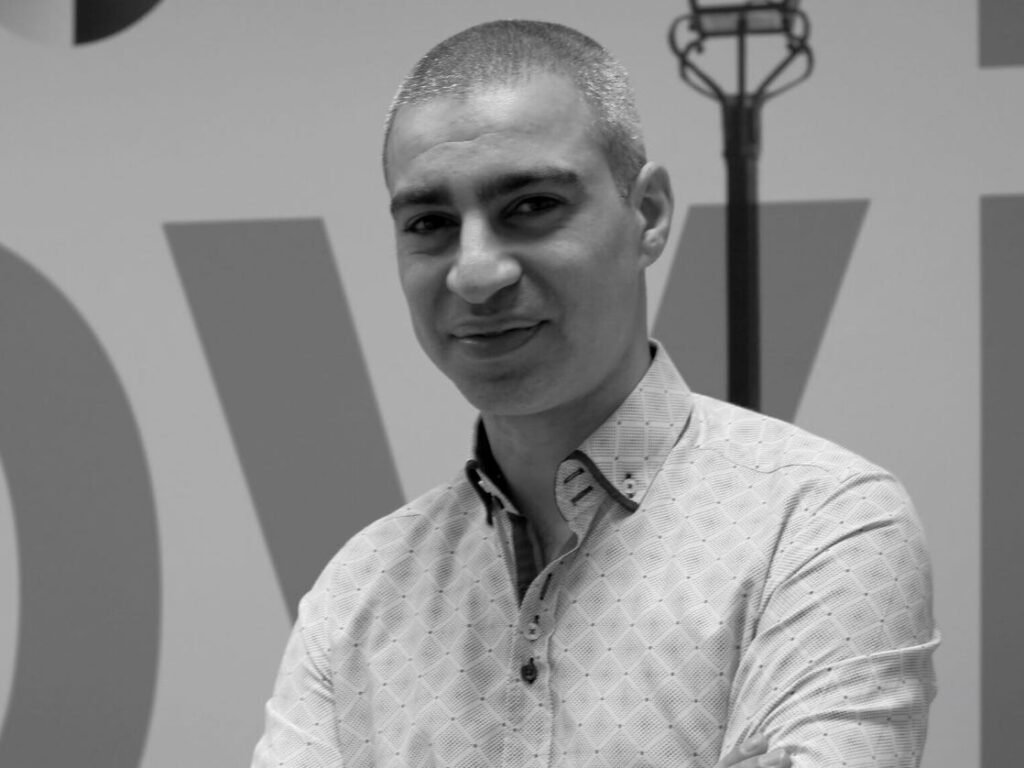- Chris Michael started a karaoke channel on YouTube as a way to repurpose his “soundalike” content.
- Michael grew the side hustle to 6 million subscribers before he even could start monetizing it.
- He shares how he brokered a licensing deal with YouTube and now turns over six figures a month.
This as-told-to essay is based on a conversation with Chris Michael, who runs the YouTube channel Sing King. The company’s revenue has been verified by Insider. This essay has been edited for length and clarity.
My dad was a self-employed hairdresser. He didn’t want me to use my hands for work; he wanted me to use my head. I dreamed of becoming a lawyer.
At school in North West London, I always had side hustles going. I sold homemade cupcakes; typed out lyrics to rap songs, photocopied them, and sold them; imported CDs — I always had something.
I worked hard and went to university to study law and sold mobile phones to pay my way through college.
While studying, I discovered company law and fell in love with learning about setting up businesses.
Ringtones got me into making 'soundalike' content
In my final year, I set up a mobile-phone company. Then I got into ringtones, which were really popular at the time.
Back in 2001, for £1.50 a week, we'd send the customer unlimited ringtones, text alerts, football alerts, and horoscopes. It didn't get much traction, but just as I was about to start studying for the bar exam, I was approached by competitors who liked the business model.
I began working with content distributors to create high-quality ringtones — stand-alone versions of the most popular songs at the time.
Life happened after that. I got married, bought a house, and then boom. Everything collapsed around 2007.
We had a recession. The iPhone came out, killing the ringtone business overnight.
I was fortunate. I was a successful entrepreneur, and the success of my ringtone business meant I could fund other ventures and ideas. One of those was a mobile-phone company called Swytch, which I still run to this day. The other was a YouTube channel called Sing King.
Karaoke content on YouTube blew up
At the time, we needed to repackage the "soundalike content" we'd made for ringtones and build something new out of it. I released our instrumentals on Spotify and iTunes.
In 2012, YouTube was blowing up, so we created about a dozen videos of songs we'd previously recorded and put them online. We already knew how to create instrumentals, we just added lyric slides and called the account "Sing King."
Sing King was my side hustle for a while. The company couldn't make any money from it at that point, but we found out very quickly that there was a demand for this content.
YouTube doesn't allow karaoke content on its platform to be monetized. Any recorded song, even an instrumental, needs permission from the rights owner to be eligible for YouTube advertising income.
People love karaoke — some for the fun of it; others use it as a way to learn English. Whatever the reason, all we wanted to do was help people sing.
Everything was going amazingly well. We knew the market and could feed new songs onto the channel quickly. We just posted content to YouTube and found our audience. We were using funds from my ringtone business to keep Sing King growing.
We couldn't make revenue until we made a deal with YouTube
But there was one major problem.
I was paying the salaries of two full-time staff members and office space myself, but we didn't have any revenue coming in. We were keeping costs low, sharing office spaces, and running a lean ship. The funds from the ringtone business were keeping us afloat.
Until we got the licensing, the company couldn't be legitimized on YouTube. We started conversations with rights holders very early in the business, but they didn't understand YouTube.
Music labels, publishers, and rights holders weren't seeing eye to eye with YouTube over royalty payments — and vice versa, so a lot of doors were closed for us.
For 7 years, we kept quiet and built our community
It took us about six years to gain around 6 million subscribers. With that many subscribers, the YouTube channel could generate enough revenue through ads to make it a worthwhile deal for the rights holders. That started a long chain of conversations with music labels, publishers, and rights holders.
It took a good year of conversations with rights holders to get the licensing we needed to enter into a partnership with YouTube.
YouTube has developed its content ID over the years, which identifies copyright-protected content. This gave rights holders the tools and reassurance they needed to do deals with people like us.
We finally got licensed in March 2020, which changed everything.
Now we've unlocked our revenues — we're not just a channel anymore. We're a real business and a brand. Now it's about leveraging that.
We're earning 6 figures a month from the YouTube channel alone
We have almost 11 million subscribers, a Sing King app, raised £400,000 in four days for our seed-funding round in May 2020, and will soon be raising more funds for our growth.
We've recently seen much faster growth over the past 18 months in non-Western territories, such as Indonesia, the Philippines, and South America.
We had over a billion views in 2022. That translates to close to 3 billion minutes in total or just over 12 million hours of people doing the karaoke they enjoy. That's crazy to me.
We currently provide karaoke on YouTube but want to provide a bigger karaoke experience — that's our next project.
